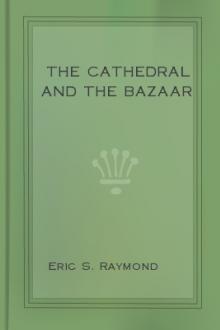Such Is Life by Joseph Furphy (children's books read aloud .TXT) 📕

- Author: Joseph Furphy
Book online «Such Is Life by Joseph Furphy (children's books read aloud .TXT) 📕». Author Joseph Furphy
“I’ll give you a tune on the violin, if you like,” exclaimed my companion, rising to his feet.
“Thank-you, Alf.”
I carefully re-packed my simple instrument, while the boundary man took from its case a dusky, dark-brown violin. Then he turned down the lamp till a mere bead of flame showed above the burner, resumed his seat by the table, and, after some preliminary screwing and testing, began to play.
Query: If the relation of moonlight to insanity is a thing to be derided, what shall we say of the influence of music on the normal mind? Is it not equally unaccountable in operation, however indisputable in effect? Contemplate music from a scientific standpoint—that is, merely as a succession of sound-waves, conveyed from the instrument to the ear by pulsations of the atmosphere, or of some other intervening medium. Music is thus reduced to a series of definite vibrations, a certain number of which constitute a note. Each separate note has three distinct properties, or attributes. First, its intensity, or loudness, which is governed by the height, depth, amplitude—for these amount to the same thing—of the waves produced in the medium. Second, the timbre, or quality, which is regulated by the shape, or outline, of these waves. Third the pitch, high or low, which is controlled by the distance from crest to crest of the sound-waves—or, as we say, from node to node of the vibrations.
To the most sensitive human ear, the highest limit of audibleness is reached by sound-waves estimated at twenty-eight-hundredths of an inch from node to node—equal to 48,000 vibrations per second. The extreme of lowness to which our sense of hearing is susceptible, has been placed at 75 feet from node to node—or 15 vibrations per second. This total range of audibleness covers 12 octaves; running, of course, far above and far below the domain of music. The extreme highness and lowness of sounds which convey musical impression are represented, respectively, by 2,000 and by 30 vibrations per second—or by sound—waves, in the former case, of 6½ inches, and in the latter, of 37½ feet.
Therefore, there are not only sounds which by reason of highness or lowness are unmusical, but, beyond these, others to which the tympanum of the human ear is insensible. Nature is alive with such sounds, each carrying its three distinct properties of intensity, timbre and pitch; but whilst this muddy vesture of decay doth grossly close us in, we can no more hear them than we can hear the “music of the spheres”—apt term for that celestial harmony of motion which guides the myriad orbs of the universe in their career through space. But, to take an illustration from the visual faculty: any sound beyond the highest limit of audibleness would resemble a surface lined so minutely and closely as to appear perfectly plain; whilst a sound too low in pitch to be heard would be represented by superficial undulations of land or water so vast in extent that the idea of unevenness would not occur. We have fairly trustworthy evidence that whales communicate with each other by notes so low in pitch—by sound-vibrations so long in range, so few per second—that no human ear can detect them. Bats, on the other hand, utter calls so high-producing such rapid pulsations—as to be equally inaudible to us.
Unison of musical notes is attained when the respective numbers of pulsations per second admit a low common-divisor. For instance, the note produced by 60 vibrations per second will chord with one produced by 120—each node of the former coinciding with each alternate node of the latter. 60 and 90 will also chord; 60 and 70 will produce discord; 60 and 65, worse discord. And so on. The science of musical composition lies in the management of sound-pulsation, and is governed by certain rigid mathematical laws—which laws the composer need not understand.
Air-movement may, of course, take place without sound-vibration, for air is only incidentally a sound-conductor. Earth, metal, water, and especially wood (along the grain), are better media than the atmosphere, for the transmission of sound. But sound may be transmitted without vibration of intervening sound-media. The electric current, passing along the telephone wire, picks up the sound waves at one end, and instantaneously deposits them, in good order and condition, at the other end—say, a couple of hundred miles away.
So that the brilliant pianist of the concert hall; the cornet-player of the “Army” ring; the blind fiddler at the corner; the mother, singing her angel-donation to sleep; Clancy, thundering forth something concerning his broken heart, whilst tailing up the stringing cattle; the canary in its cage; the magpie on the fence—are each setting in motion the complex machinery of music, and with about equal scientific knowledge of what they are doing. To the philosophic mind, however, they are not playing or singing; they are producing and controlling sound-vibrations, arbitrarily varied in duration and quality; a series of such pulsations constituting a note; a series of notes constituting an air. These vibrations are diffused from the instrument or the lips, at a speed varying with temperature, media, and other conditions; they ripple, spread, percolate, everywhere; they penetrate and saturate all solids and gases, yet are palpable corporeally only to the tympanum of the ear, and mechanically (as yet) only to the diaphragm of the phonograph.
Such, however, is the scientific analysis of music. Spoken language appeals by the same process, but with very different effect. No one can understand a language which he has not previously learned, word by word; and the verbal appeal, however imaginative or spiritual, comes in concrete form—that is, in the nature of information. Spoken words inform the emotional side of our nature, through the intellectual; whereas music, operating outwardly in the same manner, speaks over the head of intellect to an inborn sense which ceases





Comments (0)